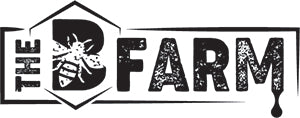Summertime is the busy season for your beehive, and staying cool is essential. Although bees can regulate the temperature within their hives, continual extreme temperatures can be deleterious to your colony. High temperatures are enough to make anyone go mad, but understanding how beekeepers can protect their bees in hot weather is the best way to ensure your bees’ productivity and safety. Learn more about keeping your beehive safe in the summer with proper ventilation, a water source, and shade.
Provide a Water Source
Beehives need a water source. Providing your bees with a water source is crucial for their health and productivity. Whether or not it’s hot out, your bees will always appreciate water. They store water in their honey guts and carry it back to the hive.
The best way to provide a water source is to build a bee pond. A bee pond is an open container filled with water and stones for the bees to land on without getting wet.
Remove Metal Roofing
Many beekeepers have metal roofs on their hives because they’re durable, but unfortunately, they also conduct heat. In hot weather, you should remove the metal roof and cover the beehive with something lighter, such as a bedsheet or wooden roofing, to provide adequate shade for your beehive.
Ensure Adequate Shade
The easiest way to protect your colony from the heat is to ensure adequate shade for the hive. Although shade doesn’t stop the heat completely, it does reduce the heat from direct sunlight. You can set up a canopy tent or an umbrella over the hive when you notice scorching temperatures in the future forecast.
Ensure Proper Ventilation and Insulation
Although beekeepers use insulation to keep their hives warm in the winter months, insulation also works to keep hives cool during the summer months. It will keep the temperature inside the beehive steady, even when the temperature spikes outside.
Ventilating the hive can release the scent of honey and put your colony at risk of robbing, but there are ways to protect your colony, and it’s sometimes necessary for extreme heat. To provide top-cover ventilation for your beehive, drill a one-inch hole in the hive’s top and cover it with a piece of screen so that the heat can escape but robbers can’t get in.
After learning how beekeepers can protect their bees in hot weather, you should be ready to prep your colony for the summer months. Becoming a beekeeper is the best way to protect the bee population in your area, so check out the selection of honeybee hives for sale at The B Farm to get started. You can also explore our blogs to learn more about beehive ventilation in the summer and other common honeybee problems.
